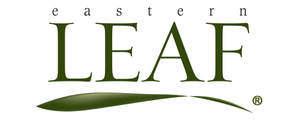| The success of your bonsai depends on a variety of factors, most notably watering and light. Below are some species specific guidelines to follow that will help ensure that your bonsai will stay healthy and happy. |
|
| Pruning Tips: Juniper bonsai trees can be trained using the clip-and-grow method or with bonsai training wire. Juniper will back bud easily when cut back. Due to this nature, undesirable branches can be removed to allow new shoots to sprout. If training with wire, we recommend using a wire that is 1/3 to 1/2 the diameter of the branch. This will ensure that the wire is strong enough to hold the branch in the desired position. To avoid browning of juniper bonsai needles, prune by pinching off unwanted stems using fingers or shears. Regularly thin out your foliage to let in light to prevent inner foliage from browning. |
|
| Fertilizing: We recommend fertilizing your bonsai tree every month with a bonsai fertilizer. Time-release granules are the easiest to use and can be added every season. Reduce the amount of fertilizer during the winter. Take care not to over-fertilize, as this can cause your leaves to burn or grow too leggy. |
|
 |
Lighting: Juniper Bonsai trees thrive best with natural sunlight. We recommend filtered natural sunlight. If placed in full sun, take care to manage your watering to prevent your tree from drying out. |
| Temperature Requirements: Junipers are very hardy to all climates, including both hot and cold conditions. Due to their evergreen nature, juniper bonsai trees will maintain their green color over all seasons. However, it may darken during the winter when the weather is cold. |
|
| Watering Requirements: Juniper bonsai trees require moderate watering. We recommend using a soft spray to soak the soil. Ensure that water penetrates not only the topsoil but also into the roots by checking that draining is occurring on the bottom of the pot. Keep the Juniper moist at all times. |
|
| Repotting: Juniper bonsai trees can be repotted during spring and fall for the highest success rates. Avoid winter repotting, as colder temperatures will make it harder for roots to recover. During repotting, we recommend trimming off older roots to promote new growth. After repotting, place the tree in a shaded area for 2-3 weeks before placing back in full or partial sun. The Juniper requires good airflow to the roots. |
|
 |
Outdoor: Juniper bonsai trees thrive best in outdoor conditions. During the winter, trees can be overwintered to protect them from freezing. |
